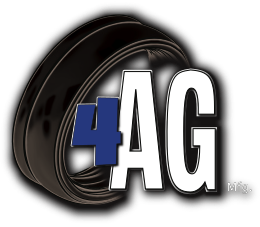How No-till Planter Works?
Bring the seed to the right depth and close the seed-vee by cutting through the residue. For an efficient no-till planter system with cultivator gauge wheel, these are all essential.
So, when you're having your rig ready to plant, make sure that the parts of your planter that are integral to these parts of the process pay special attention.
Producers may assess the strengths or weaknesses of their planter and make any improvements or changes required to make no-till effective, keeping these things in mind, take the next step.
Maintaining Sharp Openers
If sharp and operating correctly, double-disk openers will cut through residue without residue movers. Change the disk openers so that they work together with around 2 inches of blade contact as a single cutting edge. Replace the seed tube protector when replacing the disk openers as it keeps the disks apart to decrease blade flexing and acts as a scraper to help preserve the disks.
Don't Seed the Between Old Rows
As this is the most compacted area in the field, avoid planting in the heart of the wheel track. Some of the new rows will also be in gentle, untrafficked row middle rows with different soil conditions than the wheel tracks when seeding between the old rows. Planting about 4 inches to the side of the old row works well for maize on maize. This also decreases tire wear compared to driving on the root stumps.
Track Pace for Planting
Keep the speed around 4 to 5 miles per hour to minimize the bounce of the planter device and uniformly distribute seeds. Be wary of ads that say that a planter is able to "meter seed" at the speed of 7 to 8 mph. That does not mean that it can bring the seeds at higher speeds uniformly to the soil. The resulting non-uniformity of operating at higher speeds also decreases enough yields to warrant completing a larger planter (or a second planter).
The Down Pressure Increases
To achieve the desired seeding depth, no-till residue needs down pressure springs and extra weight (if necessary) on the planter to cut through and penetrate the soil. This is especially true while operating in dry soil, hard. The row units should have adequate down pressure ensuring that the depth of gauging wheels are gauging the depth of planting. Check the down pressure on the row units as conditions change.
Place a uniform depth of seeds
Make sure all the seeds are put in good soil moisture at the bottom of the seed-vee, for uniform emergence. For more uniform emergence, we may provide a more uniform planting depth. These units also provide convenient application options for in-furrow fertilizer. As the name suggests, Keeton Seed Firmers can enhance seed-to-soil contact.
Keep Uniform Residue
"Consider "even up" residue movers on the planter to establish a uniform residue layer, particularly if the residue has not been distributed evenly during harvest. But, if the residue cover is already uniform, residue movers can do more harm than good once the residue cover is like long-term no-till.
The Seed-vee Close
For seed-to-soil interaction and to decrease the dry up of the seed region, the seed-vee should be properly closed. To help close the seed-vee, the closing wheels also are applied to planters.
See us at 4ag Manufacturer for the details. We would be helping you with no-till planter with cultivator gauge wheel for the best plating experience.

